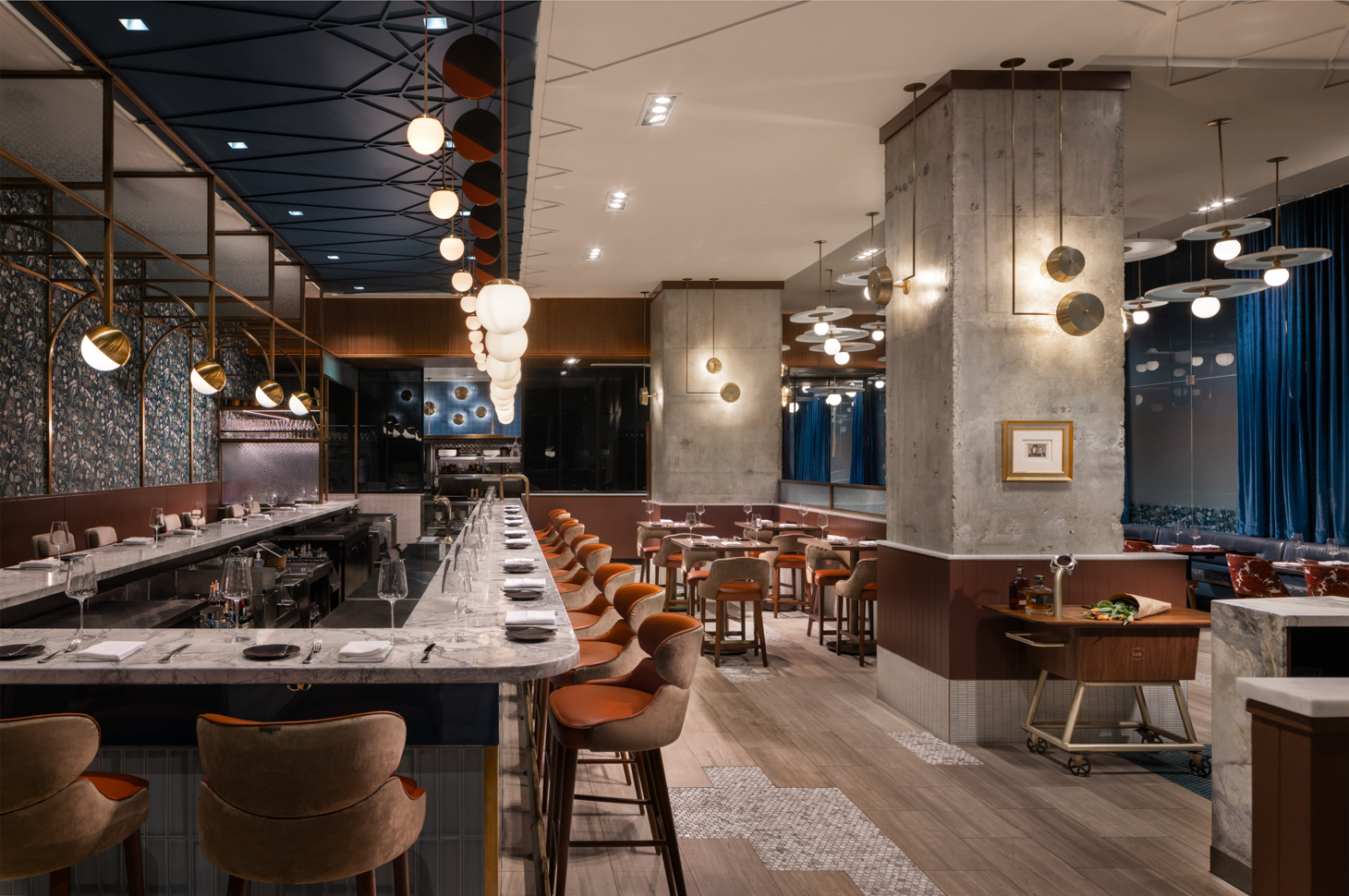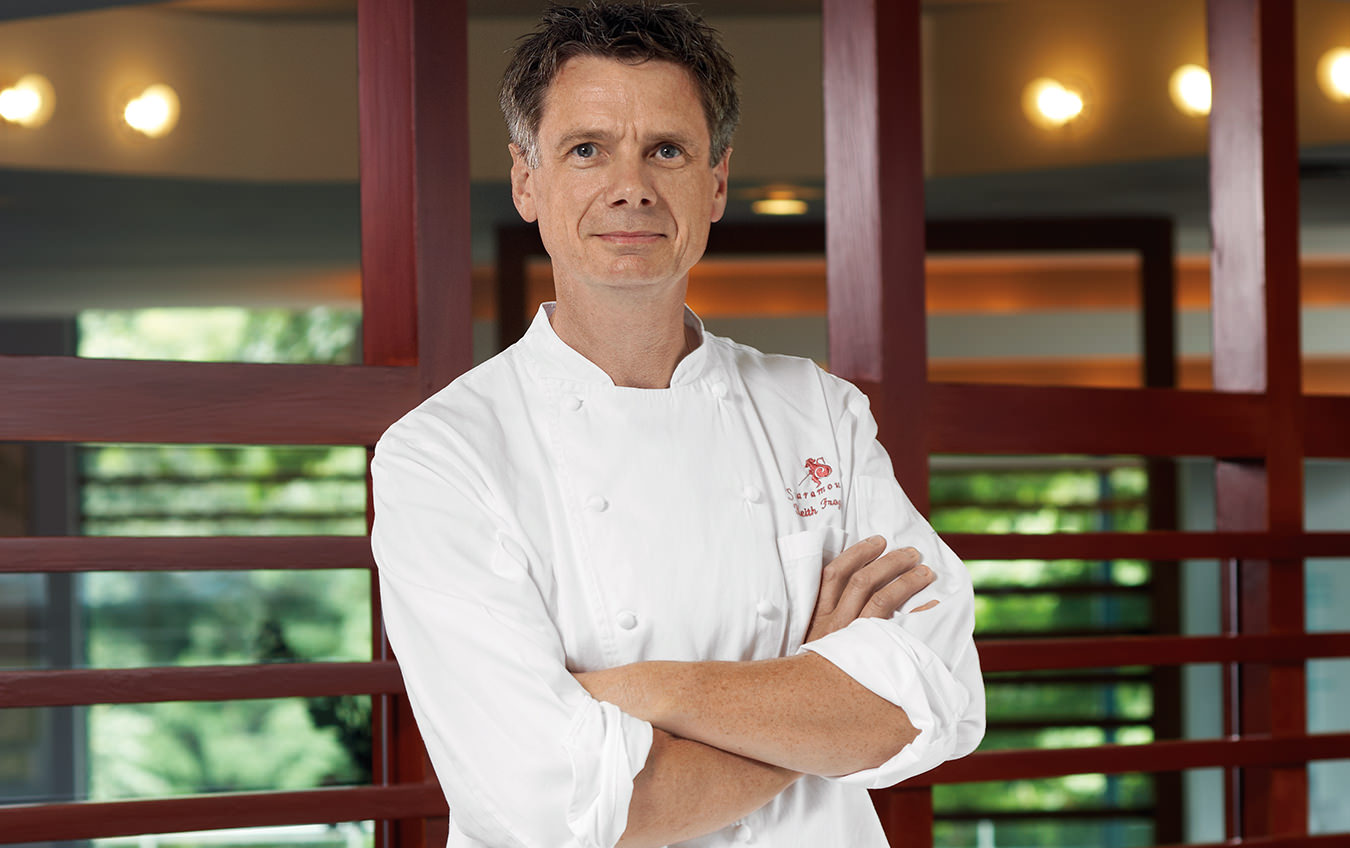Industrial Meets Cozy at This French Restaurant in Downtown Toronto
Restaurant Lucie by Chil pays homage to the restaurateur’s grandmother.

Restaurateur Yannick Bigourdan has no shortage of feathers to put in his cap. After launching numerous acclaimed Toronto eateries including Splendido Bar & Grill, Nota Bene, and The Carbon Bar, he gravitated toward something personal for his newest venture, which opened last year. Restaurant Lucie, named for his grandmother, pays homage to his childhood in the South of France, where Lucie spent her days shopping in the local market for fresh produce, meat, and eggs, cooking delicious meals for Bigourdan while his parents were at work, and making him vin sucre, a concoction of red wine, sugar, and water.
When it came time to design the Old Toronto space, it had to capture the warmth of his grandmother’s kitchen while also reflecting contemporary French fine dining tastes. Toronto’s Chil Interior Design leaned into the contrast, blending moody jewel tones with the preexisting industrial elements for a 4,000-square-foot restaurant that reflects both past and present.

“Throughout the development of the design, we knew that Lucie had to exude warmth,” says the design director of Chil, Bridget Bedard. “It was an interesting design challenge to determine how we could achieve that in a space that felt industrial. In the end, it wasn’t about covering up those industrial elements but about celebrating them and layering on the new.”
Chil paired floral wallpaper and chair upholstery with angular concrete columns and made high ceilings more intimate with collared and globe pendants. Curved brass lights form an archway over one side of the large marble U-shaped bar. In the dining room, sky-blue banquettes pop against deep-burgundy walls, and red terra cotta tabletops match chairs with vibrant floral backs. Opulent royal-blue velvet curtains reach from floor to ceiling, adding warmth to the space and blocking ambient noise.

A guiding light for the 70-seat design was Bigourdan’s grandmother’s love of classic pop music, which is reflected in the song lyrics on the wall and multiple nods to Serge Gainsbourg, including a portrait of the French singer-songwriter from Bigourdan’s collection and juniper wallpaper to reference Gainsbourg’s favourite spirit, gin.
“Not only did the music of the era connect us to Lucie and Yannick’s memories of her, but it offered us a framework for how the restaurant should feel. Lucie is intimate and moody while also functioning as a natural extension of its incredible cooking and celebration of contemporary French cuisine,” Bedard says.

Where possible, Chil retained existing elements to reduce waste and minimize construction time. The designers kept the marble bar and maple flooring, repairing unsalvageable portions with small hexagonal tiles and embracing the Japanese wabi-sabi philosophy of accepting aesthetic imperfections.
Beyond the musical references, the designers added elements that reflect the French countryside, French culture, and Bigourdan’s memories of Lucie, such as the hanging chain-link art installation of characters from the French film Borsalino and sepia-toned pictures in gilded frames. “While some of these are more literal and others are more abstracted, they all stitch together to create an atmosphere that nods to their shared love of cooking and the desire to connect with others through food,” Bedard explains.
Photography by Adrian Ozimek.





